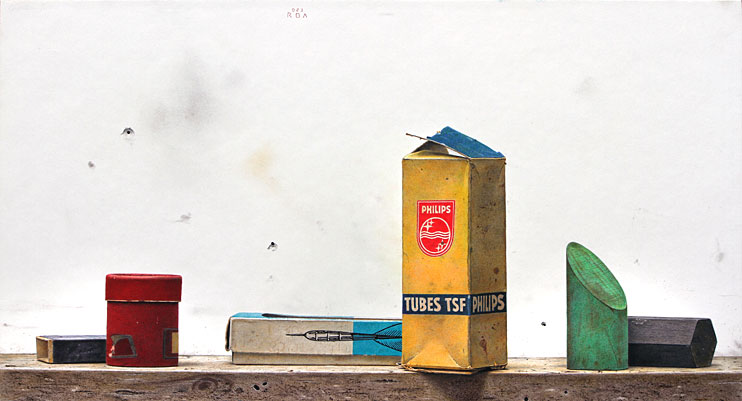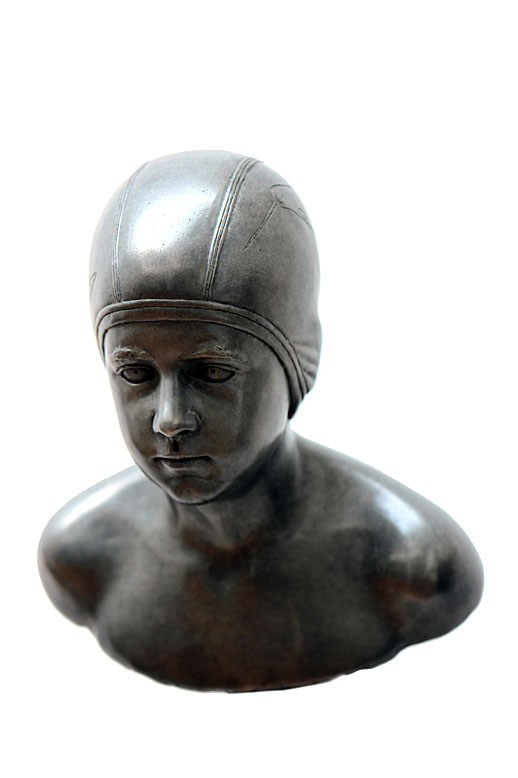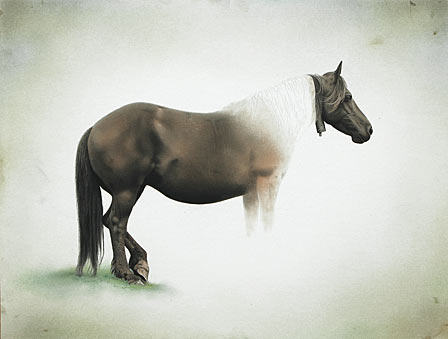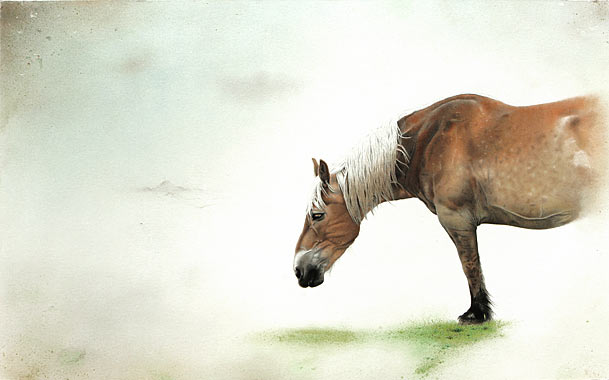
"Pieza 21 - Pelikan" 2017
kleurpotlood/karton op paneel
27 x 22 cm
Eu 2.000

"Elva II" 2023
kleurpotlood/karton op paneel
25 x 46 cm
(verkocht - sold)

"Philips" 2023
kleurpotlood/karton op paneel
25 x 46 cm
(verkocht - sold)

"Gonzalo" 2011
brons, oplage 7
15 x 13 x 16(h) (+ wandsokkel h 34 cm)
Eu 2.600

"Caballo" 2015
kleurpotlood/karton
34,5 x 45,5 cm
Eu 4.200

"Half Paard" 2015
kleurpotlood/karton op paneel
41 x 66 cm
Eu 5.200
It usually comes naturally to me, or so I feel, to recognise the national characteristics in the work of Mediterranean painters. Whether or not I’m right and whether or not it’s even appropriate to use such terms, for me Roa’s work has always been the exception. But let’s first go back in time, to when I was travelling around Spain to acquaint myself with the national superstars of the Realist movement and compile an exhibition of their work. Among the “cream of the crop” in my view was an artist by the name of Gustavo Isoe, who I found out had actually hailed from Japan originally.
It was not until much later that I found out that he had been among Roa’s teachers, with both of them participating in international exhibitions including in Japan and the United States. I have wondered ever since whether I’m correct in thinking that Gustavo Isoe managed in Spain to liberate himself from the burden of his native-born culture and in doing so ended up – probably inadvertently – handing Roa the tools needed to shake off his own national stylistic and pictorial shackles. And although Roa himself actually escaped my attention while my Spanish quest was in progress, that too happily sorted itself out in the end.
|

